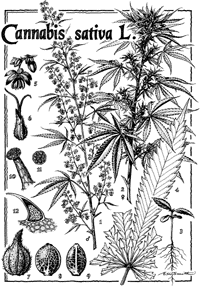Study links marijuana buzz to 'runner's high'
ATLANTA, Georgia (Reuters) -- The same family of chemicals that produces a buzz in marijuana smokers may be responsible for "runner's high," the euphoric feeling that some people get when they exercise, U.S. researchers say.
High levels of anandamide were found in young men who ran or cycled at a moderate rate for about an hour, according to a study made public this week by the Georgia Institute of Technology and the University of California, Irvine.
Anandamide is a cannabinoid, or lipid molecule, that is naturally produced in the body. It is known to produce sensations that are similar to those of THC, the psychoactive property in marijuana.
The study's findings, which were recently published in the journal NeuroReport, fly in the face of those who believe that the release of brain chemicals called endorphins cause the peculiar high that some runners and cyclists claim to feel.
Arne Dietrich, the study's principal investigator and a former visiting professor at Georgia Tech in Atlanta, believes the body releases cannabinoids to help it cope with the prolonged stress and pain of moderate or intense exercise.
"No other study has ever considered this possibility, which is why the results are so significant," said Dietrich, who added that there were no indications that cannabinoids caused any harm when naturally released during intense exercise.
He added that the findings could provide sufferers of glaucoma and chronic diseases an alternative to using marijuana for pain control. Use of the drug for medical purposes has been approved by voters in some states, but remains illegal under federal law and highly controversial in the medical community.
The 24 young men who participated in Dietrich's study were asked to run, cycle or sit. If they ran or cycled, participants began with a brief warm-up, followed by 45 minutes of moderate exercise and then a short cool-down period.
Dietrich said further studies were necessary to determine the precise nature of the increase in cannabinoids during physical activity and to what degree the intensity, duration and type of exercise affected their release.
The "runner's high" theory emerged in the United States during the running craze of the 1970s, when researchers discovered the brain's opiate receptors, which are proteins located on the surface of nerve cells.
Some scientists, however, say the concept is a myth.

